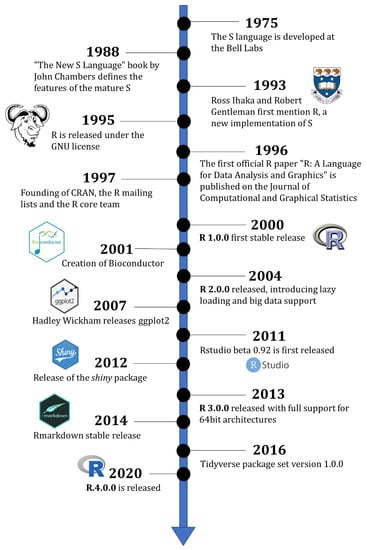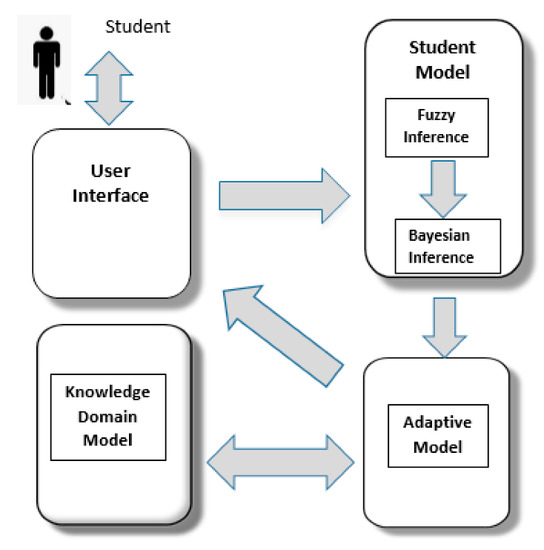10 Simple Techniques For Bioinformatics Tutor
10 Simple Techniques For Bioinformatics Tutor
Blog Article
An Unbiased View of Bioinformatics Tutor
Table of Contents5 Easy Facts About Bioinformatics Tutor DescribedThe Only Guide to Bioinformatics TutorThe Best Strategy To Use For Bioinformatics TutorAn Unbiased View of Bioinformatics TutorBioinformatics Tutor Fundamentals Explained
Of the overall participants involved in the training, 80% were pupils from public college establishments, while the continuing to be 20% came from private institutions. To get approved for a certification of involvement, pupils were called for to go to at least 90% of the total training hours. As an outcome of this demand, an excellent 95% of the participants efficiently acquired their certificates, having not just satisfied the minimum attendance standards however also finished all designated tasks throughout the training.
During the elevation of the COVID-19 pandemic, specifically in between June and August 2020, the project group was entrusted with organizing specialized training in bioinformatics. This training was specifically aimed at trainees from the research group Core for Research in Applied Computing at the Federal College of Pará (UFRA) The adaptation to remote knowing systems due to the pandemic produced a chance to explore new training methodologies and digital devices that boosted both reach and effectiveness.
This program was made to offer an available yet extensive introduction of Artificial Intelligence techniques, particularly as used in bioinformatics (Bioinformatics Tutor). This digital layout made it possible for participation from trainees throughout Brazil, many of whom may not have had the chance to participate in in-person sessions.
Some Known Incorrect Statements About Bioinformatics Tutor
A significant feature of this program was its emphasis on hands-on knowing. About 50% of the total training hours were devoted to functional tasks where pupils developed intelligent versions and applications in a series of clinical domains, consisting of genetics, molecular biology, and environmental information evaluation. Widely utilized devices and structures such as Spyder, Google Colab, Jupyter Notebooks, and Orange were incorporated into the coursework. These platforms allowed trainees to take part in real-time information adjustment, version training, and formula experimentation.
The training course brought in 80 individuals in overall. Sixty of them were associated with different higher education institutions in the state of Pará, while the remaining twenty originated from establishments situated in five other Brazilian states. This broad geographical depiction highlighted the nationwide rate of interest in bioinformatics and the growing demand for specialized abilities in this location. By introducing Expert system in a pertinent and functional context, the initiative served to link the space in between theory and real-world application, offering students with a strong foundation for future research or work in the area.
The training effort created part of a more comprehensive academic outreach initiative referred to as the Bioinformatics on the Road job. This task has, throughout the years, introduced lots of pupils to the world of bioinformatics and computational biology. The occasions held under this umbrella initiative have actually taken place across numerous regions and years, as summed up in Table 1 (Checklist of events, areas, years, and total numbers of pupils and instructors)
Numerous of these teams, originally brought with each other by their participation in training events, have because gone on to create independent scientific research study in partnership with regional scholastic organizations. The training not only promoted scientific thinking within the context of bioinformatics yet additionally triggered joint partnerships that expanded past the training setting.
The 7-Minute Rule for Bioinformatics Tutor
The job itself was conceptualized and arranged by megabytes and RR, who oversaw the preparation and application of each step. Lectures were supplied by a multidisciplinary team including megabytes, FA, EF, KP, JS, DM, SN, LP, LG, RR, ih, and air conditioner. The exact same team, excluding IH and RR, likewise worked as tutors for the functional training modules. Financing for the job was provided with the grant 88887.200562/ 2018-00 from CAPES. The writers extend their gratefulness to everybody that contributed to the understanding of this job, whether straight or indirectly, because its beginning.
The Federal University of Pará's Office of Study (PROPESP/UFPA) also supplied financial support, especially for the production of the final manuscript. The writers proclaim no economic or commercial disputes of passion that could have influenced the study. Furthermore, all interpretations and opinions revealed in this write-up are solely those of the authors and do not necessarily mirror those of their corresponding institutions, the publisher, editors, or customers associated with the magazine process.

All About Bioinformatics Tutor
From an instructional viewpoint, the training strategy view made use of in the training was deliberately interactive. Courses were carried out in a manner that encouraged pupil engagement and conversation, surpassing rote memorization to explore just how concepts are established, applied in every day life, and tested in scholastic setups. The training philosophy concentrated on supporting both strong and struggling students, giving personalized support, and structure self-confidence through sustained mentorship and patience.

Each group, including roughly 36 participants, was sustained by 3 coaches-- most of whom were postdoctoral researchers with customized expertise. These advisors not only helped design the team jobs but also promoted their execution, ensuring that each study concern was both properly challenging and pertinent. The goal was to give a naturally reasonable context that individuals might explore via open-ended purposes and access to curated datasets.
For additional understandings into the method and results of this project-based knowing strategy, visitors are routed to S1 Text, which consists of detailed summaries of the pedagogical framework, evaluation methods, and project styles made use of in the training sessions.
The 4-Minute Rule for Bioinformatics Tutor
Of the total amount individuals included in the training, 80% were pupils from public greater education establishments, while the continuing to Check Out Your URL be 20% came from personal organizations. To qualify for a certificate of engagement, pupils were needed to participate in article source at least 90% of the total training hours. Especially, beyond the trainees that enlisted in the training sessions, seven knowledgeable instructors took part in delivering the training courses, while three dedicated research teachers coordinated the total training process. Approximately 50% of the total training hours were dedicated to functional tasks where trainees constructed intelligent versions and applications in an array of scientific domains, consisting of genetics, molecular biology, and environmental data evaluation. The training not just fostered clinical reasoning within the context of bioinformatics but likewise sparked joint partnerships that extended beyond the training environment.
Report this page